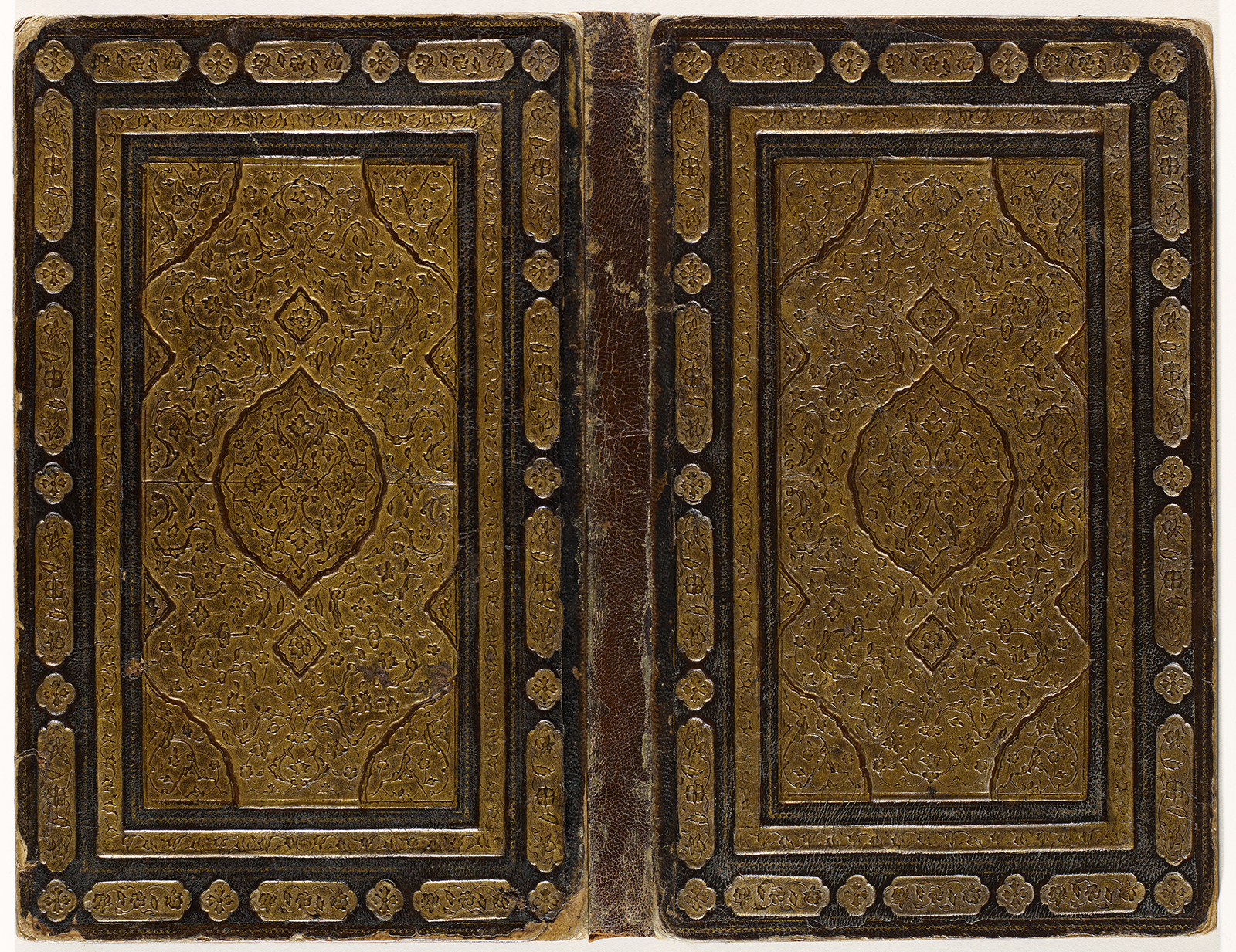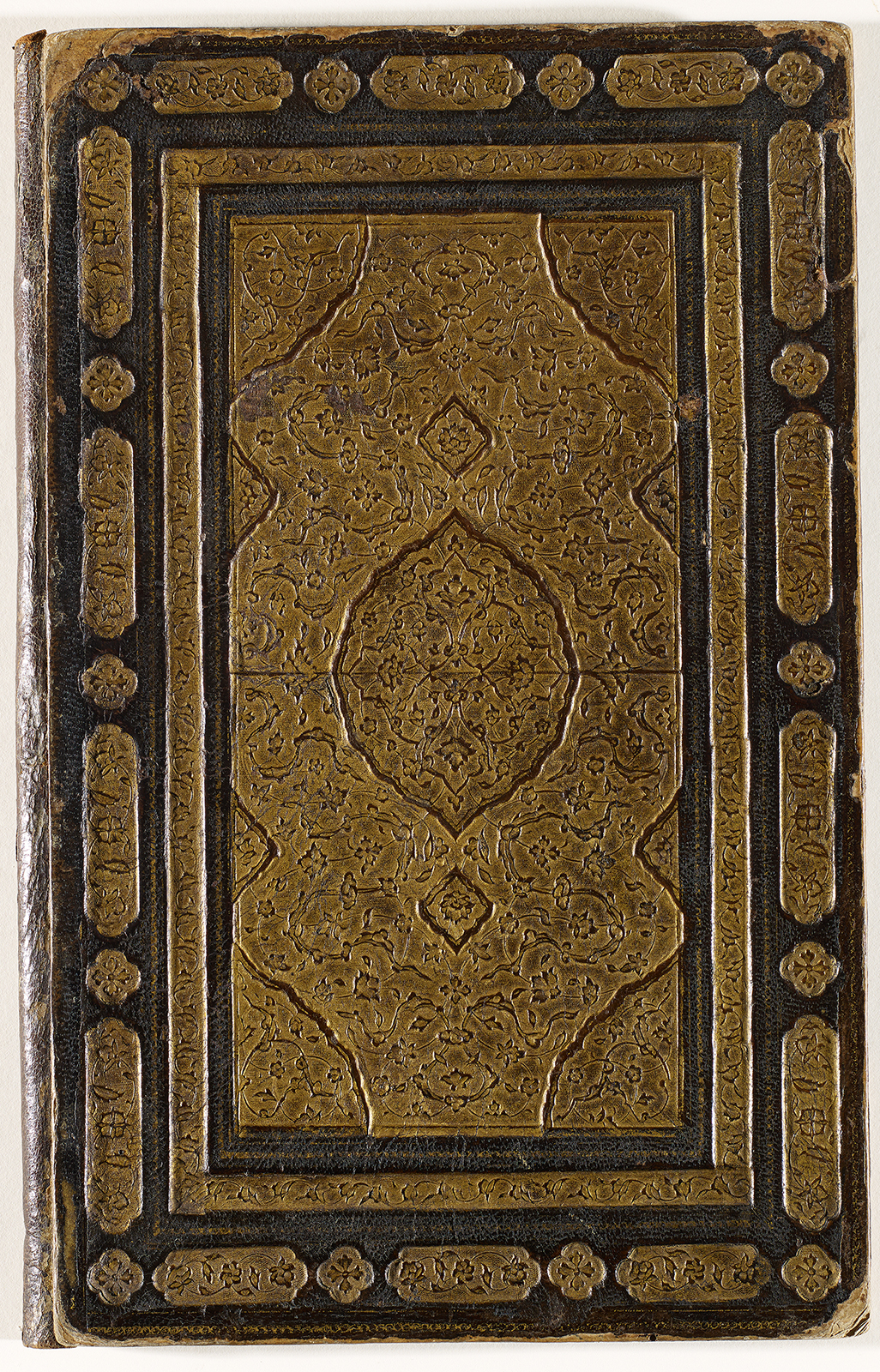Click on the image to zoom
Binding, outer covers and doublures: upper and lower
- Accession Number:AKM387
- Place:Iran
- Dimensions:28.4 cm × 17.4 cm
- Date:ca. 1580
- Materials and Technique:Dark chestnut-coloured leather, pasteboard, gold, lapis blue, green, red, blue, and black
Durable yet easily decorated, leather presented an ideal material for protecting Islamic manuscripts. Some particularly fine bindings executed in the 15th century even featured different designs on the upper and lower covers.[1] Delicate leather filigree was often reserved for inner covers (doublures), where it would be less susceptible to damage.
Further Reading
Now missing its flap, this binding was likely produced after 1565 in the Khurasan region (perhaps in Herat).[2] These origins are suggested by two of the binding’s most notable decorative features: the large fan-like flowers on the covers and, on the doublures, a latticework composition cut from gold-painted leather over a polychrome ground.
Each cover bears a medallion with pendants and cornerpieces that also have pendants. The cornerpieces are filled with a two-tier design of scrolling branches and flowers overlaid by another motif (called “rumi”) whose bulbous body and pointed end resemble stylized leaves. The medallions are decorated with scrolling branches bearing fan-like large and smaller flowers on the lower level, and cartouches formed by linked rumi motifs on the upper level. The area between the medallion and cornerpieces is slightly sunken and again has a two-tier decoration: on the lower level, scrolling branches bearing fan-like large and some smaller flowers; and on the upper level, cloud motifs. The narrow border is decorated with flowers on a branch, and the wide border with cartouches filled with flowers. All the decoration is stamped and gilded.
The light chestnut-coloured leather doublures are adorned with a diaper pattern in gilded filigree laid over a polychrome ground. The cartouches inside the broad border are filled with black leather filigree in a design of scrolling branches laid over a blue and green ground.
- Zeren Tanındı
Notes
[1] Oktay Aslanapa, “The Art of Bookbinding,” figs. 38, 48, 51; Julian Raby and Zeren Tanındı, Turkish Book Binding in the 15th Century. The Foundation of an Ottoman Court Style, 106–25, cat. 1–4.
[2] Zeren Tanındı, “Safavid Bookbinding,” 178, 180; Olga V. Vasilyeva, A String of Pearls, 13, 111; and ibid., “Gild-Stamped Bindings of the Last Quarter of the Sixteenth Century and the Qazvin Workshop,” 39–56.
Tanındı, Zeren. “Safavid Bookbinding.” Hunt for Paradise. Court Arts of Safavid Iran 1501–1576, eds. Jon Thompson and Sheila R. Canby. Skira: Milan, 2003, 155–83. ISBN: 9780878480937
Vasilyeva, Olga.V. A String of Pearls. Iranian Fine Books from the 14th to the 17th Century in the National Library of Russian Collections. St. Petersburg: National Library of Russia, 2008.
ISBN: 9785819203309
Note: This online resource is reviewed and updated on an ongoing basis. We are committed to improving this information and will revise and update knowledge about this object as it becomes available.








